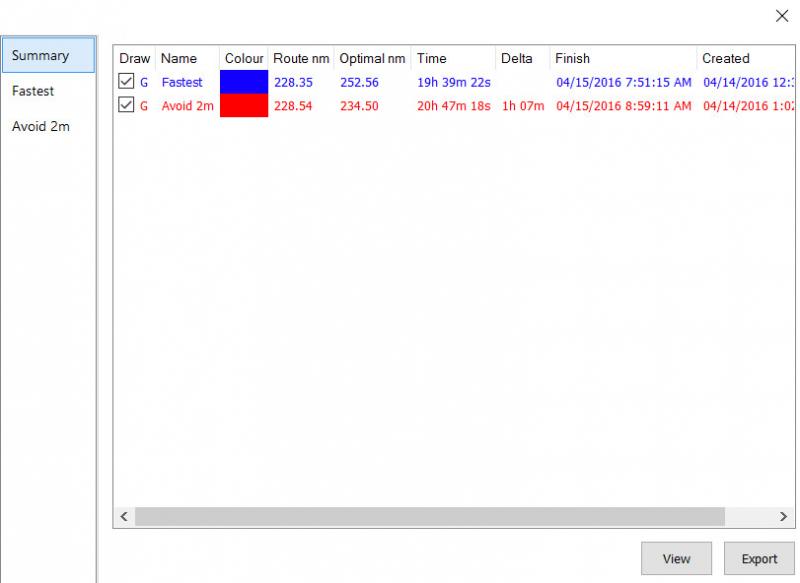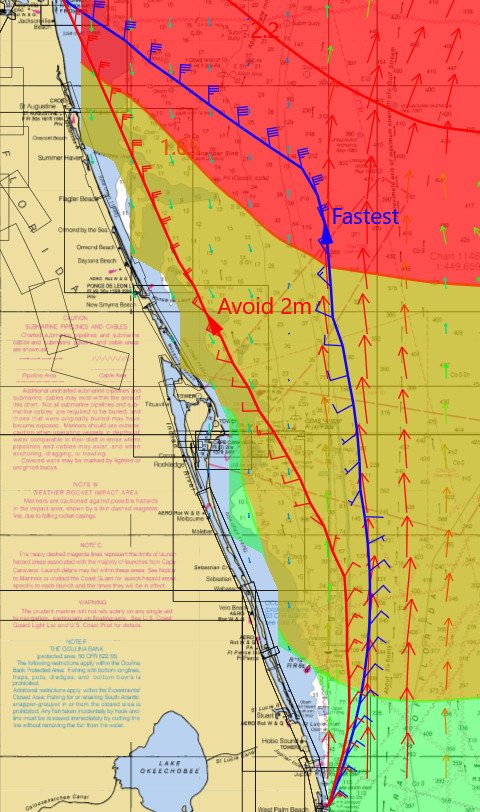Interstate Sailing Incorporated
EXPEDITION ROUTING

A straight line is often not the quickest way from Point A to B, particularly for a sailboat. The Expedition Optimal Routing function incorporates your boat's polars plus wind and current GRIB files to calculate the fastest way to reach the finish line.
Racing sailors benefit from:
* Multiple routes for different polar %
* Multiple routes for different weather models
* Isochrones & reverse isochrones plus time sensitivity shading to gauge risk vs. reward
* Wind and current arrows on optimal route
* With a Sail Chart loaded, know which sails to carry for the race
Cruising sailors will also enjoy:
* Avoid max-height significant waves and max true wind speed
* Shading of rain, wind speed, significant wave height, and air/sea temperature
* Motoring speed, minimum sailing speed, and fuel consumption rate

ABOVE: Routing and gain/loss time summary for a large motorsailer on delivery from West Palm Beach to Jacksonville.
Racing and cruising navigators will both benefit from knowing the fastest way to reach their destination. By knowing the amount of time at stake, the navigator will then have an important tool to help determine the best course.
In the example above, any racing navigator would relish the chance to gain 1 hour on a 20 hour race, but perhaps the delivery captain would instead prefer the calmer seas along the rhumbline.
BELOW: The solution is easy: adjust your settings to avoid the rough seas expected in the Gulf Stream when the northerly winds fill in, but still benefit from the northerly-running current and avoid the headwinds while you can.
With Expedition Routing, you are able to choose a fast ride or a comfortable ride, or the best blend of both!
MOTOR SAIL ROUTE IN EXPEDITION WITH TideTech CURRENT GRIB

AVOID 2m WAVES FOR A SMOOTHER RIDE; 1 HOUR LONGER TRIP

Copyright 2012 Interstate Sailing. All rights reserved.
Interstate Sailing Incorporated